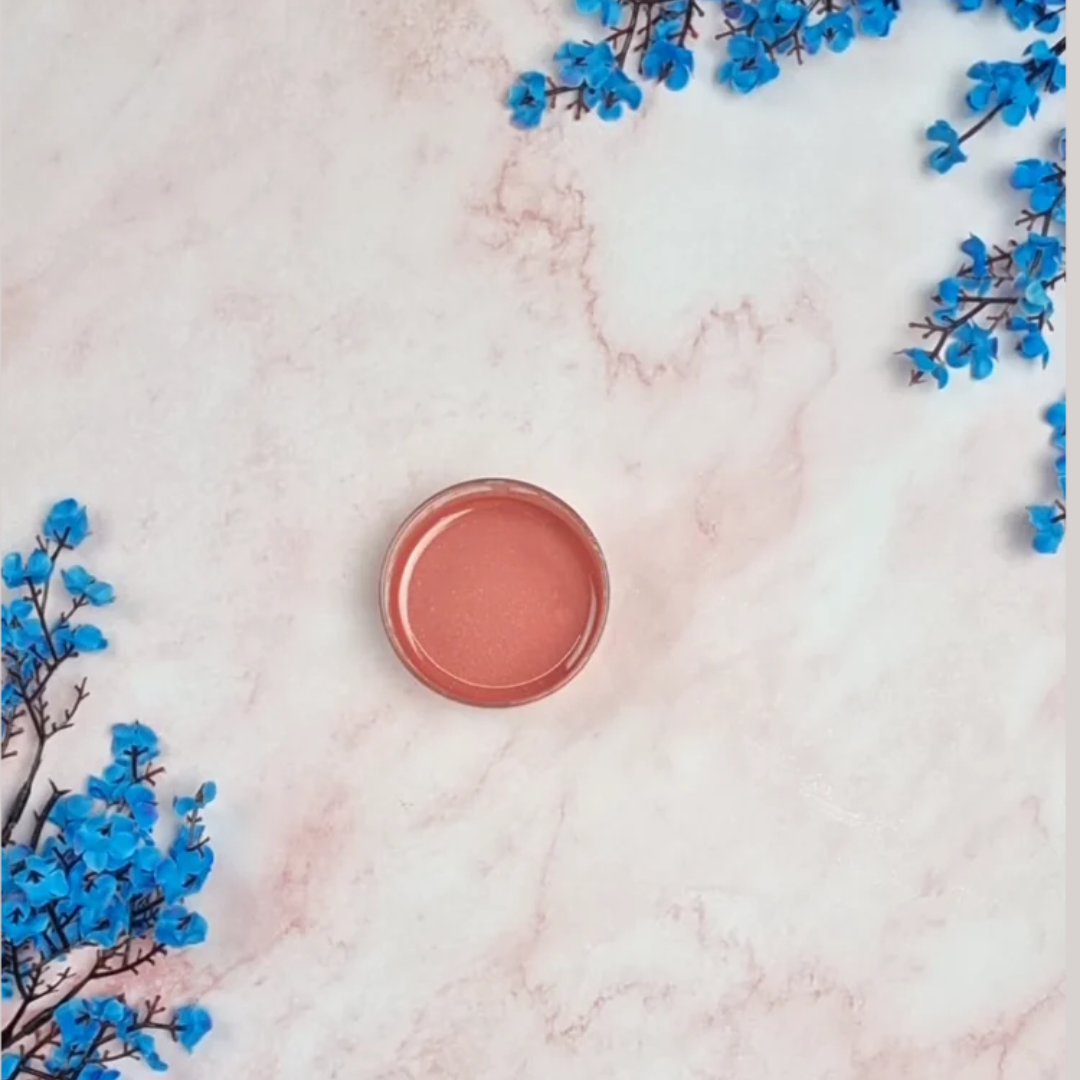Instead of working with a rose wine inspired scent blend, this creamy pot of colour takes its inspiration from the cheery pink colour of rose. It’ll lend a similar pinky, summery flush to your cheeks and lips, along with a hint of shimmer. We're in love with this little pot of happy colour and find reaching for it daily to add a summery pop to your look!
Rose Cream Blush
Rated 5.0 stars by 1 users
Instead of working with a rose wine inspired scent blend, this creamy pot of colour takes its inspiration from the cheery pink colour of rose. It’ll lend a similar pinky, summery flush to your cheeks and lips, along with a hint of shimmer. We're in love with this little pot of happy colour and find reaching for it daily to add a summery pop to your look!

Purenso® Ingredients
Directions
Prepare a water bath by heating about 1.5cm/ ½” of water until it is steaming, but not simmering, in a wide, flat-bottomed sauté pan.
Weight the heated phase ingredients into a small heat resistant cup. Place the cup in your prepared water bath to melt everything through.

Stir the mixture with a spatula to incorporate. Make sure you’re smearing the spatula across the bottom of the cup to blend in the pigments.

When the mixture is thoroughly melted and blended, remove it from the heat and quickly blend in the vitamin E.
Dry off the outside of the cup and carefully pour it into a small jar and leave the cream blush to set up. That’s it!

To use, use your fingertips or a brush to tap a small amount of product onto your cheeks and/or lips, and blend as desired.
The finished cream blush leaves a lovely pink rose-inspired flush on the cheeks and tints the lips beautifully. It applies easily with fingertips or a brush, and is sure to brighten both your face and your day!

Recipe Note
Because this cream blush is 100% oil-based, it does not require a preservative.
Kept reasonably cool and dry, it should last at least a year before any of the oils go rancid. If you notice it starts to smell like old nuts or crayons, that’s a sign that the oils have begun to oxidize; chuck it out and make a fresh batch if that happens.
SUBSTITUTIONS:
We don’t recommend substituting out the castor oil, beeswax, or sericite mica; if you do, you’ll need to re-develop the formula to ensure it works for you.
You can use virgin or refined coconut oil.
You can use babassu oil instead of coconut oil.
You can use a different coloured mica and/or pigment; this will impact the colour of the end product.


